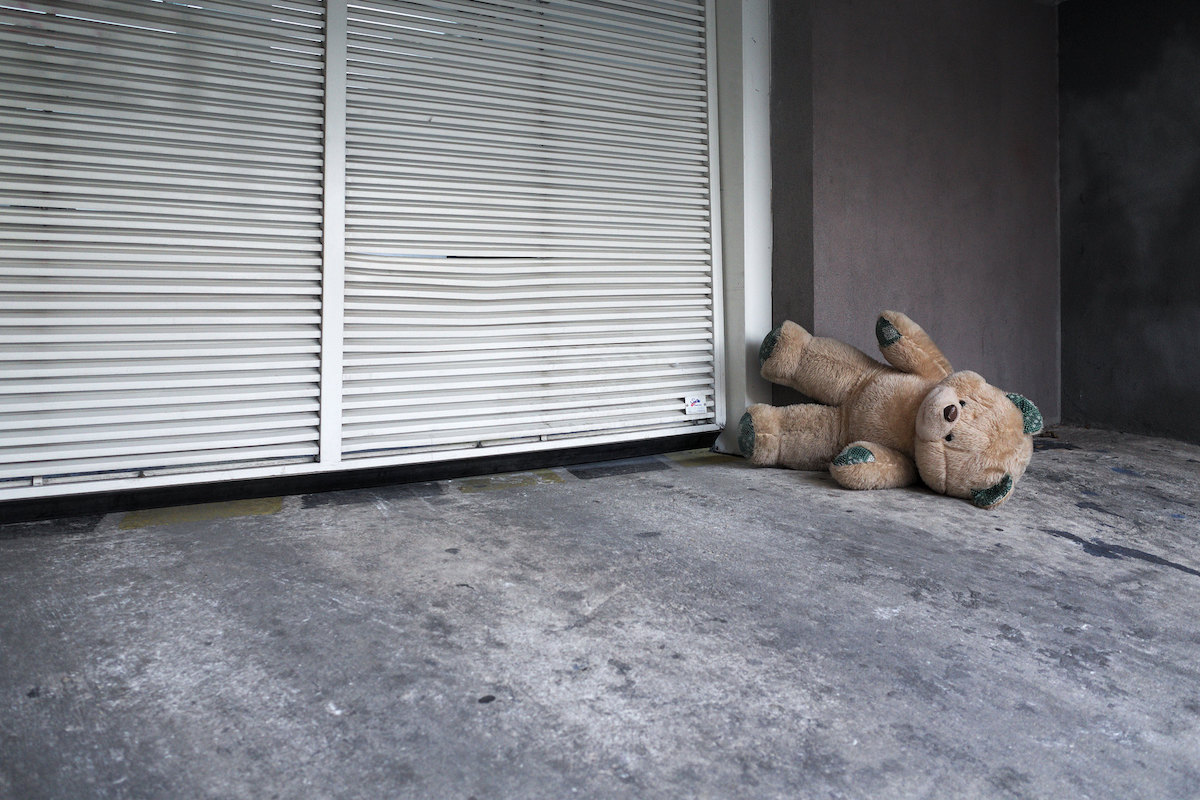Canada
Neglecting At-Risk Children in the Name of Cultural Sensitivity
She has more than 20 years of experience working with families and children in true crisis, including with issues ranging from rape, to drug addiction, to terminal illness

It started three years ago: a troubling case for a veteran mental-health professional that involved a young girl with serious health issues and a history of severe trauma. There were a multitude of protection concerns, including the girl’s low functionality, well below her chronological age. She was the equivalent of a five-year-old, but with the appearance of a young teen—a dangerous combination. A succession of partners to her single parent came in and out of her life. She was often the displaced target of their hostility, meant for a partner who was often absent. A string of child protection workers were involved, each less invested in her case than the one before. Phone calls and letters were directed to Toronto’s Children’s Aid Society (CAS), urging that the girl no longer be left at home for hours on end, or allowed to leave the house mid-winter without a hat, coat, or gloves. It was reported that many nights, the girl was making her own supper, and putting herself to bed; or left in the care of adults who would retraumatize her with emotional and physical abuse. CAS would respond with the equivalent of a shrug: The parent was doing their best. There was no imminent danger.
Then came COVID-19. Her school and in-person social services were closed. Boredom and loneliness closed in. The girl had no friends or other family in Toronto. And the only person she could connect with was a soon-to-be stepparent back in her birth country, whom she occasionally called. The hours alone stretched into days and weeks. She exhibited signs of anxiety and depression. She couldn’t say what she did all day.
CAS was informed that the girl was being left to her own devices for eight to 12 hours a day. It was dangerous to leave an adolescent with the mental capacity of a first-grader unsupervised for such long stretches, not to mention cruel. But the assigned child-protection worker reported that the situation had been investigated. The girl was left alone only when her parent went to work. Plus, she had a cell phone.
But, as it turned out, the parent also left the city on weekends, leaving the girl by herself. Her cell phone sometimes worked, sometimes not. The CAS worker noted that in case of an emergency, she could access WhatsApp through the computer provided by her school.
The cell phone stopped working after it was dropped in water. This proved to be a blessing in disguise, at least in the short term, as the girl had stumbled onto a dating app. She’d also taken to posting pictures of herself, on various social-media platforms, dancing around the house in revealing shorts. Still, according to the CAS worker, there were no protection concerns.
Then, after months and months of insistent prodding from a mental-health professional, a case conference was finally scheduled. A long list of concerns was prepared and presented, recounting protection issues dating back more than a year. Yet unbeknownst to the mental-health professional, the CAS had invited an “equality liaison” to the meeting. The liaison dismissed the expert’s concerns, explaining that they were overblown, maybe even symptoms of what she termed “middle-class bias.”
The mental-health worker was stunned. Over the years, she’d worked on the case with a team, whose members had all attempted to support the girl and her family, and who shared her own concerns. Were they all biased?
The girl was not white. She was born in another country. She lived in a low-income environment. All that was true. But didn’t she deserve to have the same standards applied to her case as any other child? Instead of spending time on the call discussing what could be done for the girl, the specialist was forced to fend off accusations of cultural insensitivity. In particular, the liaison suggested that she and her team had failed to consider supports that might be available from local, culturally specific sources within the “community.”
“What community?” the mental-health professional wondered. This girl was painfully alone.
* * *
Like other child-welfare agencies across North America, the Toronto CAS has few public supporters. Nobody is posting stories on the Internet about the positive experiences they have with the bureaucracies charged with removing children from parents’ care. There are entire websites devoted to attacking the CAS, mocking its workers, telling people what to do if they’re ever contacted by them. (Don’t let them into your house; deny everything; accuse them of racism; and so forth.) Anyone looking for nuanced context regarding child welfare will mostly find misinformation, ad hominem attacks, and scandals, some imagined, a few real. The same is true in the media coverage: There are no media reports about the tragedies that CAS prevented, no journalists writing stories about potentially life-saving interventions—children and teens saved from caregivers with documented patterns of dangerous neglect.

The current media environment promotes the idea that child-welfare agencies are, at best, “problematic”; at worst, racist. Reporters frequently point out that black and Indigenous children tend to be removed from their parents and caregivers at much higher rates than, say, white or Asian children. Within the discipline of social work, particularly in academia, there is an ongoing, increasingly radicalized debate. Defenders of welfare agencies point out that these disadvantaged groups—for many reasons—tend to experience much higher rates of issues that are associated with potentially neglectful and dangerous situations for children, including substance abuse, domestic partner abuse, and parental incarceration. On the other side, many argue that any such talk merely distracts from “the real problem that creates and maintains disproportionality [among races]—racism, both within child welfare and in society at large.”
The rise of Black Lives Matter and similar movements have given the latter argument more rhetorical force. Dorothy Roberts, professor of Law, Sociology, and Africana studies at the University of Pennsylvania, argues that CPS—Child Protective Services, as it is often known in the United States—is “an integral part of the US carceral regime… Just as police don’t make communities safe, CPS affirmatively harms children and their families while failing to address the structural causes for their hardships.”
Such blanket statements may once have seemed extreme, or at least open to healthy debate. No longer. They are now on the syllabus at Master of Social Work (MSW) programs across North America. If you are a young case worker at a child-welfare agency in Canada or the United States, you will have taken courses that advance the idea that your mission is shrouded in racism. Of the seven courses required to earn a MSW at the University of Pennsylvania, for instance, two focus exclusively on “racism and social work practice.” At the Rutgers School of Social Work in New Jersey, the syllabus of a required course called “Diversity and Oppression” aims to help students “understand how power and other dynamics manage and sustain oppression at the individual and institutional levels.”
The intent behind these courses, at least originally, was benign. And it is undeniable that Canada and the United States both have a long history of racist policies, including the removal of children from poor, racialized families to give them “a better life.” (In Canada, in particular, this racist intent was embedded into the country’s Residential School system.) Unfortunately, social workers are now being encouraged to extrapolate from these historical examples in a way that suggests their own conscientious day-to-day work will inevitably be classified as both racist and classist. Their jobs were already difficult. It’s hard to imagine how much more so they have become in the current climate.
* * *
“It’s time for CAS to stop trying to bring children into the child welfare system—and focus on supporting the family instead,” reported the Toronto Star recently, paraphrasing its interview with Mahesh Prajapat, Chief Operating Officer of CAS Toronto. But what will this look like, exactly?
One clue came last month, when Ontario announced the end of its “Birth Alert”—a system by which child-protection agencies alerted hospitals to the potential that newborn infants were at risk because birth mothers, fathers, or other family might not be able to provide necessary care. These alerts, a provincial press release indicated, “disproportionately affect racialized and marginalized mothers and families.”
When I showed this news item to the mental-health worker who’d shared the above-described case with me, she asked the obvious question: What were they going to do instead? According to the release, I told her, the new plan was “high quality, culturally appropriate… collaboration between children’s aid societies, hospitals, service providers, Indigenous partners and community-based service providers.”
“I just want them to do their job,” she told me. “Why can’t they just do their job?”
This woman isn’t the type to worry about a kid missing lunch or getting the occasional case of lice. She has more than 20 years of experience working with families and children in true crisis, including with issues ranging from rape, to drug addiction, to terminal illness. One of her first placements as a trainee was with pediatric oncology patients. Where others might look away, she looks closer. She has seen it all, and knows what neglect and abuse look like. She knows when a child is not getting minimal standards of care, either as defined by law or by the children’s own real psychological and physical needs. She also knows how to document her concerns and get help for children and families that need it. But in recent years, she’s noticed that it’s become harder to get CAS officials to take decisive action. Even when children are removed from unsafe environments after months of documentation and reporting, many are returned to parents or other biological family, even though circumstances hadn’t substantially improved.
Back to the girl—and the question of what “culturally specific” services might be available to help her. Neither the liaison nor child-protection case workers had been able to offer any recommendations. The imperative to keep families together with “community” support seemed, increasingly, to be code for not doing much of anything.
Finally, in June, the near constant flow of emails and phone calls from the mental-health professional yielded some minor progress: Two workers were hired to each spend a day per week with the girl. No longer would she spend every day alone. With luck, the girl might be pulled back from the brink.
But after a month, one worker, who’d spent 12 hours with the girl each week but had yet to be paid, was threatening to quit. The other worker was spending her days with the girl taking her along on her other job: door-to-door delivery of food to the elderly. Both reported that often, at the end of their long shifts, the parent had not yet returned home as scheduled. Meanwhile, the supervising CAS case worker was unreachable, on vacation.
By then, it was nearly August. The days were long, hot, and humid. Everyone was exhausted and drained—including the mental-health professional. The summer of COVID-19 continued, and the child continued to deal with it, still mostly alone.






